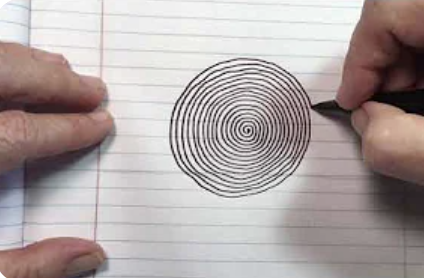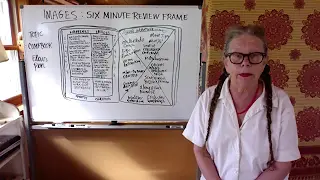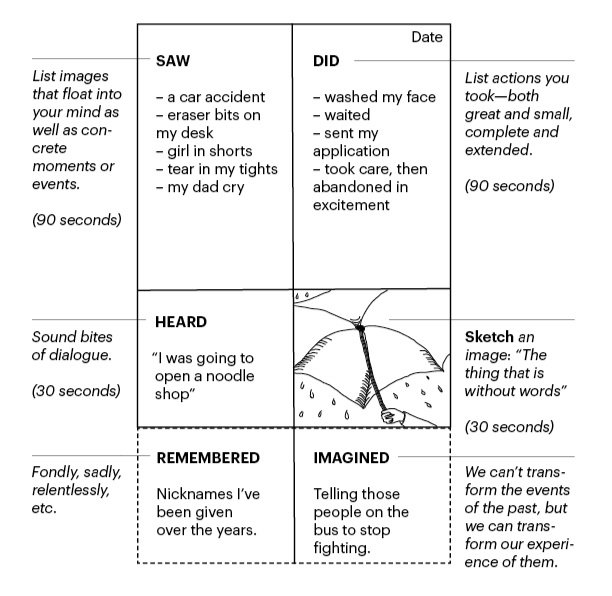Lynda Barry Writing Workshop
Lynda Barry led an amazing writing workshop at RISD on January 15, 2013, leading us through these five steps. She told us that she’d learned this technique from a teacher/mentor, and encouraged us to pass it along. You can find more prompts and guiding videos on Lynda Barry’s YouTube channel.
-
Leaders: Read a poem or passage to guide writers into visualization, relaxation, and awareness of their bodies. Instruct them to actively focus on your words while drawing the spiral.
Writers: Draw a spiral on a blank page, keeping the line as close to itself as possible. Actively focus on the leader’s guiding words to visualize, relax, and become aware of your body. This action will get you into the physical act of writing.
-
Leaders: Choose a topic for the writers to brainstorm on. Start with simple concrete words like “cars.” As you repeat the activity, move on to more specific topics like “elementary school classmates.” Give the group 90 seconds to generate ideas, then ask them to choose one to write about.
Writers: Write the topic at the top of a page numbered from 1 to 10. Generate multiple ideas, letting your mind make connections between the topic and your memories. Choose the one that you like best, that has trouble in it, or that surprised you.
-
Leaders: Walk the writers through their scenes. Spend around 90 seconds asking questions about the sensory, spatial, and temporal details, the characters, actions, and scenario.
Writers: Draw an X over the page, so it’s already imperfect; there’s no pressure for eloquent wording or precision. Jot down the details of your spatial memory in response to the leader’s questions.
-
Leaders: Give the group 7 minutes to write about their stories. Announce the 3-minute mark to give structure to their writings. Then announce the 30-second mark to let them form their last thoughts, and the 5-second mark to finish the last sentence.
Writers: Drawing from and expanding on your notes, use simple language to tell your story. Keep in the motion of writing for the entire 7 minutes. When you’re not sure what’s next, write “ABCDEFG...” until you have something, or continue your spiral.
-
Leaders: Ask for volunteers to read their stories. Ask everyone else to keep their eyes on their spiral. Use eye contact to call on each reader, and count down to their reading from 5. Tell writers to read straight through without editing. This forces us to stick to the story in simple and natural language and gives permission for pauses, hurdles, and mistakes. When a reader is done, give affirmative but general closure to each reading: ”Good. Who’s next?”
Readers: Raise your hand to read aloud. Read straight through without editing, including any ABCs.
Listeners: Don’t look at the person reading. Instead, draw your spiral. Listen without thinking about what you’ll say. This allows you to be immersed in the story, taken away from the here and now.
Lynda Barry’s 4-Minute Diary
During her workshop here, Lynda Barry also taught us this practice for getting into the habit of noticing your environment and writing about it. She instructed us to do this exercise quickly, without premeditation. Daily repetition changes the way you pay attention to your life. It fosters a living relationship with the world. Looking back over your diary, you will see patterns and begin to notice what you notice. You can find this and other guiding videos on Lynda Barry’s YouTube channel.



